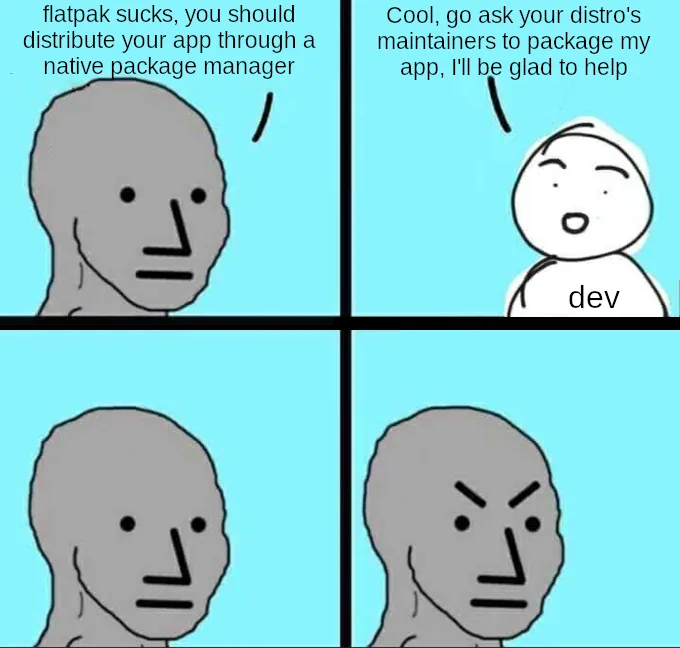this post was submitted on 05 Jul 2024
742 points (93.9% liked)
linuxmemes
21393 readers
1649 users here now
Hint: :q!
Sister communities:
Community rules (click to expand)
1. Follow the site-wide rules
- Instance-wide TOS: https://legal.lemmy.world/tos/
- Lemmy code of conduct: https://join-lemmy.org/docs/code_of_conduct.html
2. Be civil
- Understand the difference between a joke and an insult.
- Do not harrass or attack members of the community for any reason.
- Leave remarks of "peasantry" to the PCMR community. If you dislike an OS/service/application, attack the thing you dislike, not the individuals who use it. Some people may not have a choice.
- Bigotry will not be tolerated.
- These rules are somewhat loosened when the subject is a public figure. Still, do not attack their person or incite harrassment.
3. Post Linux-related content
- Including Unix and BSD.
- Non-Linux content is acceptable as long as it makes a reference to Linux. For example, the poorly made mockery of
sudoin Windows. - No porn. Even if you watch it on a Linux machine.
4. No recent reposts
- Everybody uses Arch btw, can't quit Vim, and wants to interject for a moment. You can stop now.
Please report posts and comments that break these rules!
Important: never execute code or follow advice that you don't understand or can't verify, especially here. The word of the day is credibility. This is a meme community -- even the most helpful comments might just be shitposts that can damage your system. Be aware, be smart, don't fork-bomb your computer.
founded 1 year ago
MODERATORS
you are viewing a single comment's thread
view the rest of the comments
view the rest of the comments

In regards to sandboxing, it only gets as far in the way as you ask it to. For applications that you're not planning on putting on FlatHub anyway you can be just as open as you want to be, i.e. just adding
/- orhostas it's called - as read-write to the app. (OpenMW still does that as we had some issues with the data extraction for original Morrowind install media)If you do want to sandbox though, users are able to poke just as many holes as they want - or add their own restrictions atop whatever sandboxing you set up for the application. Flatpak itself has the
flatpak overridetool for this, or there's graphical UIs like flatseal and the KDE control center module..